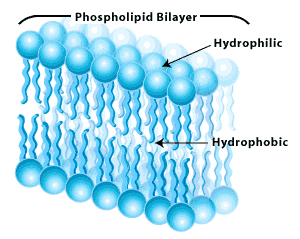
My son's lego creation (as seen in this post) was built from individual Lego blocks. Similarly, our bodies are built from individual units called "cells". There is a big difference though - as Lego blocks are non-living objects whereas our cells are alive! Infact, a cell is the smallest unit of life!
What differentiates a living cell and a non-living Lego block? Well, all living things are capable of the following:
- acquire & utilize energy
- reproduce
- respond to the environment
- carry out controlled chemical reactions
- maintain homeostasis
What then can I say is the function of a Lego block? Perhaps, the following:
- It should be a non-toxic and safe toy
- It should be moulded into precise shapes for the precise connection to other blocks.
- It should be sturdy and durable
A Lego block's functional requirements are relatively simple. As such, its chemical composition that goes into making a Lego block should be relatively simple. My guess is that the Lego block would be made up of a durable, non-toxic type of plastic chemical.
In contrast, the living cell's functional requirements are very complex. Hence, the chemical composition that goes into making up a cell must be complex. Basically, our cells and its components therein are made up of 4 main classes of complex chemical structures. These chemical structures are what biochemists refer to as "macromolecules".
Macromolecules are called as such because they are relatively large, complex molecules made up from smaller chemical units. For details about the chemistry of macromolecules, please refer to the following link - http://oh.essortment.com/whataremacromo_rcpy.htm.
Just like the structure of a durable, non-toxic, plastic chemical would fulfill the function of a simple Lego block; the structures of macromolecules fulfill their respective functions in the cell to sustain life! So, let me briefly run through a few key structure-function relationships of the 4 main macromolecules in our cells.
1) Carbohydrates
From my earlier post about "why we have to eat", you would have read that our main energy source is from carbohydrates. Small carbohydrate units, like glucose, have polar chemical structures which render them soluble. This makes glucose easily accesible by our cells to be broken down by catabolism. As glucose is catabolised, energy is released. Our cells utilise this energy to drive essential biochemical reactions.
2) Lipids
Lipids are a secondary energy source. More importantly, phospholipids (a type of lipid), are a major component of cell membranes - the protective "envelope" that surrounds cells.
The structure of phospholipids comprise a hydrophilic (water-attracting) head and a hydrophobic (water-repelling) tail. As a result of these chemical properties, phospholipids tend to adopt a "bilayer" conformation where the hydrophilic heads are in contact with water, and hydrophobic tails are hidden away from water. This phospholipid "bilayer" is functionally important in cell membranes.
 3) Proteins
3) Proteins
 3) Proteins
3) ProteinsProteins form all the "working" structures of our cells. This class of macromolecules have many, diverse functions. These range from enzymes which drive chemical reactions; to ion channels in our cell membranes that control what goes in and out of cells; to structural components like the cytoskeleton which gives cells their shape. Hence, proteins must be able to adopt many different structures to suit their many, diverse functions.
Nature has enabled proteins to fulfill their roles by designing 22 different building blocks which can go into making up a protein molecule. These protein building blocks are called "amino acids". There exist about 22 amino acids, all with different biochemical properties which Nature can "pick and mix" together to make a particular protein. Thus, Nature can "customise" a specific protein structure to a correspondingly specific biological function!
4) Nucleic acids
This class of macromolecules include DNA (deoxyribonucleic acid) and RNA (ribonucleic acid). In contrast to proteins, nucleic acids have only 1 primary function. That is to store information. One may think of nucleic acids as the macromolecule that functions as an "instruction manual" for the cell.
All cells must be able to "read" this "instruction maual". Therefore, the structure of nucleic acids is very uniform in all cells. As most of you would know, DNA has the famous "double helix" structure. The instructions encoded in a DNA molecule comprise of just 4 letters - "A", "T", "C" and "G". In RNA, these are "A", "U", "C" and "G".
In my next post, I will talk more about DNA and how we "read" the "instructions" encoded in this macromolecule.
As for now...I hope you have come to understand what the heck are macromolecules and why the heck they are in our cells!

2 comments:
Ms, it is harry writing....
I was surprised, "Woa... My teacher's photos is on the net!!".
Just kidding Dr....
Dr, why the bilayer picture is not complete? Where is the other part? Is there a membrane only made up of phospolipid?
Thanks Dr and Merry Christmas
Hi Harry,
So nice of you to drop by my blog!
Yes, I'm glad you remember that the membrane structure includes proteins as well as phospholipids. The bilayer picture in this post is just to illustrate how the hydrophilic heads and hydrophobic tails of phospholipids adopt a bilayer conformation.
So...to answer your question -
"No" there are no membranes with only phospholipids.
Wishing you a Merry Christmas too!
Post a Comment